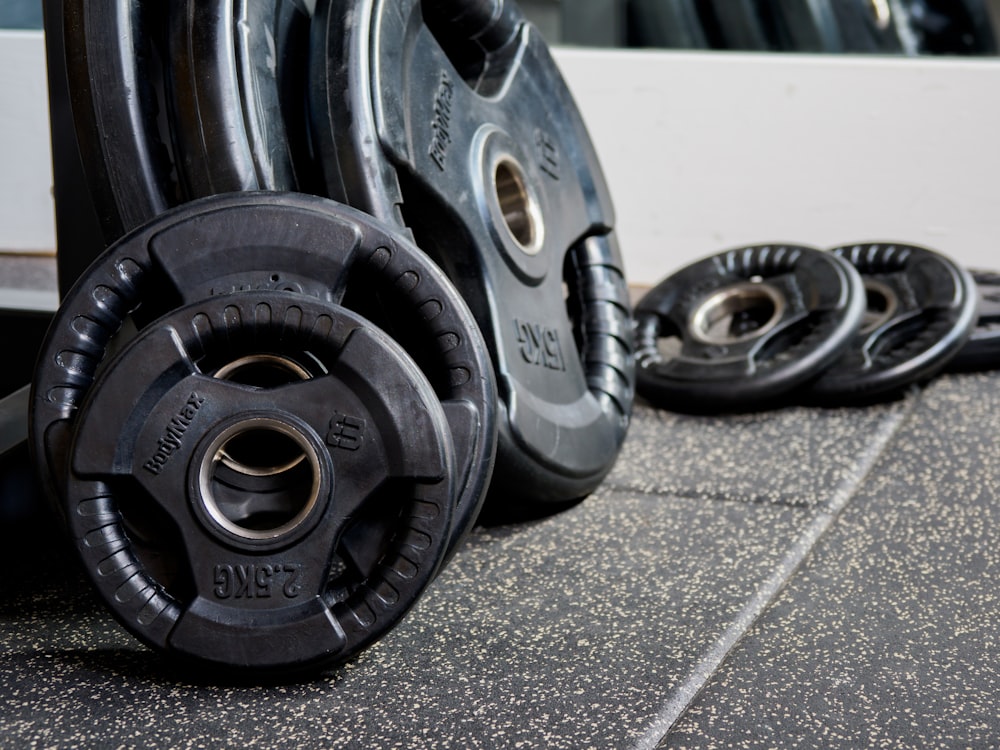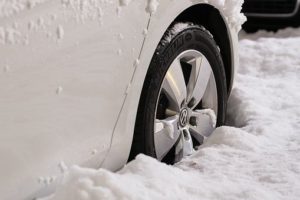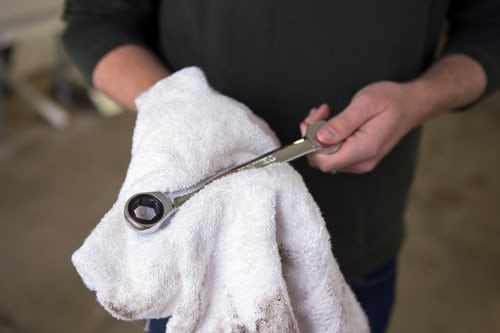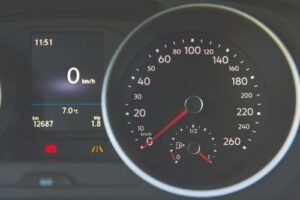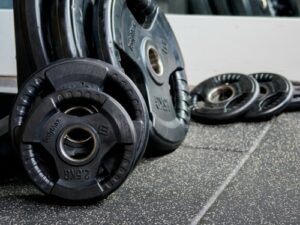
Brake rotors are an important braking system component that stops your vehicle. Brake rotors or brake disc are what your vehicle’s brake pads clamp down on to stop the wheels from spinning when you intend to stop.
Some people may be surprised to learn that the brake rotors or discs are just as important to stopping their vehicle as the brake pads are. Like other brake parts, there are several types of brake rotor available.
You will be able to determine which are best suited for your car and truck and how to maintain them. In this article you will learn all about resurfacing brake rotors and when to replace brake rotors.
How Do I Maintain My Brake Rotor?
To keep your vehicle in good working condition always, a little routine maintenance process needs to be performed.
In terms of vehicle’s braking system, this may include regular checking and changing of your brake rotor, fluid and pads if they have worn out below approved standards.
Should my rotor be resurfaced or replaced?
To conclude on what choice to make, there is the need to have an overview of pros and cons of either choice.
- The quality of original equipment rotors can vary from excellent to questionable. Most car makers insist rotor quality is extremely important. Much as the rotors are part of the brake system, safety is paramount.
- Semi-metallic brake pads usually contain a very high percentage of chopped steel fiber, so they typically cause more wear on the rotors than most ceramic or non-asbestos organic (NAO) brake pads.
- The brake rotors wear a little more every time you use your car’s brakes, and the speed of the wear depends on: the type of brake pads, the hardness and quality of the castings, how well the rotors can cool themselves, your braking style and your car’s level of exposure to moisture and road salt. Over time, rotors can become thinner from frequent friction, warp from heat and pitted.
- Sometimes your rotors may need to be resurfaced because they have worn unevenly, warped from heat, or become damaged by worn brake pads or pitted from corrosion or rust.
- Resurfacing rotors removes some of their metal, until the surface is smooth and even again. However, every rotor has a minimum thickness that is established by the vehicle manufacturer. If the rotor requires resurfacing and cannot maintain the minimum thickness, it will have to be replaced.
- On vehicles where rotor wear is a problem, switching to a “softer” friction material (such as ceramic or NAO) may solve the problem.
- Replacing one worn-out rotor usually means replacing both rotors on the vehicle, since they usually experience the same amount of wear. Many brake experts recommend replacing both rotors at the same time (even if one is still “good”) to maintain even braking side-to-side. A significant difference in rotor thickness may cause the brakes to pull toward one side.
What Is Resurfacing Rotor?
Resurfacing a rotor is simply to remove metal, making the rotor thinner and reducing its remaining service life. Because of this, some consumers as well as some vehicle manufacturers say rotors should not be resurfaced every time the pads are replaced (unless the rotors are badly grooved or uneven).
Resurfacing restores a flat, smooth surface that provides the proper friction characteristics, minimizes noise-producing vibrations and allows for maximum pad contact.
In some cases, rotors may not have to be resurfaced when the pads are replaced. If they are relatively smooth with minimal grooving, they may not need to be cut.
However, most professional brake technicians won’t take a chance on not resurfacing the rotors for fear the brakes may be noisy or not feel right until the pads are fully seated in.
Installing new pads on a grooved rotor causes the pads to ride on the high spots of the rotor. Eventually, the pads will wear down and make full contact with the rotors as they seat in.
But this increases pad wear and decreases overall pad life. So it could also be argued that not resurfacing the rotors is counter-productive to maximizing brake life.
What if I need to Replace My Rotor?
New rotors should be ready to install right out of the box. There should be no need to “clean them up” with a shallow cut on a lathe.
This may actually produce a worse surface finish and/or run out on the rotors if they are not resurfaced correctly. It will also reduce the thickness of the rotors, shortening their useful service life.
As inexpensive as many aftermarket rotors are today, it’s quite affordable to simply replace the rotors rather than resurface them.
Some auto parts stores offer free resurfacing to customers who purchase pads, while others charge a nominal fee for resurfacing ($10 to $20 per rotor).
Some customers are more concerned about braking performance and safety than saving money so, recommend premium-grade replacement rotors. Premium rotors typically use the same casting configuration as the original.
Cast rotors are less expensive and more rigid than composite rotors, therefore if a vehicle was originally equipped with composite rotors, the original rotors can be replaced with similar composite rotors or cast rotors.
Suffice to say here that, whether you are having your old rotors resurfaced or replaced with new rotors, you need not overlook related costs associated with your choice such as brake fluid, brake hoses, calipers, brake lubricant and any specialty brake service tools that may be needed to service the brakes.
Summarily, resurfacing or outright replacement of your rotor depends largely on the level of worn on the rotor, your maintenance culture and pocket.
The brake rotors, also called brake discs, are an important part of your braking system attached to your wheels, and what your vehicle’s brake pads press down on to stop your wheels from spinning which help you avoid accidents. So make your choice.
How much does it cost to resurface?
The average cost for a brake pad replacement, resurface rotors is between $235 and $329. Labor costs are estimated between $158 and $200 while parts are priced between $77 and $129.
Estimate does not include taxes and fees. This may also differ depending on region and technical expertise.
What Can Wear my Rotor Out Prematurely?
- Excessive run-out (or worn out) in the rotor or hub can result from a stack up of manufacturing tolerances (or poor quality control). This can sometimes be reduced by re-indexing the rotor position on the hub, or if that doesn’t work, by resurfacing the rotor on the vehicle with an on-car brake lathe or by installing thin tapered shims between the rotor and hub.
- Corrosion also can kill rotors. All rotors rust to some extent when a vehicle is parked and is not driven for a period of time like a week or more, especially in a damp environment. Some rotors are worse than others when it comes to rusting. Rust is bad because it weakens rotors over time, and makes the brakes noisy when the vehicle is first driven after being parked. Rusty rotors also increase brake pad wear. The pads will usually scrape the rust off after a few stops, but until then the rust is interfering with the pads and reducing their stopping ability.
- Rotor distortion and run-out also can be caused by over-tightening or uneven tightening of the lug nuts. If somebody zips on the lug nuts with an impact wrench, the uneven loading of the lug nuts can twist and distort the hat section of the rotor, causing the disc part of the rotor to wobble as it rotates. You can use a torque wrench to final tighten the lug nuts prevents this kind of distortion.
- Heat management is another factor that affects both rotor wear and braking performance. When the brakes are applied, friction generated by the brake pads rubbing against the rotors creates a lot of heat. The heat is absorbed by the disc portion of the rotor, and is dissipated by the cooling fins (slotted vents) between the faces of the disc.
- The number, spacing and shape of the cooling fins is also important because some designs are more efficient than others. Vented rotors are almost always used for the front brakes, while vented or non-vented rotors may be used in the back where braking loads (and heat) are usually less.
- Dirt or rust between the rotor and hub also can create run-out. Cleaning the face of the hub and the inside face of the rotor hat section with a drill-powered circular brush can eliminate this cause of worn out.
- Aggressive driving, pulling a trailer, hauling heavy loads or mountain driving all can cause brake temperatures to soar. Over time, this will increase pad and rotor wear, requiring the brakes to be serviced sooner than would be necessary with more normal or light use highway driving.
- Hard spots in a rotor casting also can cause uneven wear. The hard spots resist wear while the surrounding softer areas experience more wear.
What happen if I do not replace my brake Rotor
The implication of driving with a worn-out brake pad and rotor is better imagined than experienced. Brake failure may result in fatal accident which could be costlier than the expenses envisaged to incur either for resurfacing or outright replacement.
Can I drive with warped rotors?
When brake rotors become warped, the amount of force moving the steering wheel back and forth may be violent, and enough to lose control of the steering wheel.
Warped or excessively worn rotors may vibrate irregularly and cause vibrations that can be felt in the pedal, and sometimes through the vehicle’s steering wheel or chassis. The brake pedal may also feel like it’s pulsating when pressed due to warped brake rotors.
Therefore, driving with warped rotors is not considered safe, and the brake rotors can eventually crack or break, leaving the vehicle at an extreme loss of braking power.
Symptoms of a Bad or Failing Brake Rotor/Disc
The general signs or symptoms of faulty car brake rotors include noisy brakes, vibrations that can be felt through the pedal, and score marks on the rotor. Others to look out for may include grooves or score marks on the rotor and increase stopping distances.
Conclusion
Knowing the great important role brake rotors play on the well-being of the vehicle and how safety-conscious we should be always while on the road.
It is safe to conclude that great deal of consideration and care is taken on the correctness of the parts to use, the conditions of the entire braking system and all other accessories attached.
You are enjoined to, as a matter of routine, check your vehicle every morning before springing to the street and as early as possible, at best, replace your wearing pads and rotors at or resurface them as the case may be.
Life is sacred, we hope you now understand more about resurfacing and when to replace brake rotors. If you have a comment or question, drop it in the box below, we will be glad to hear from you.
